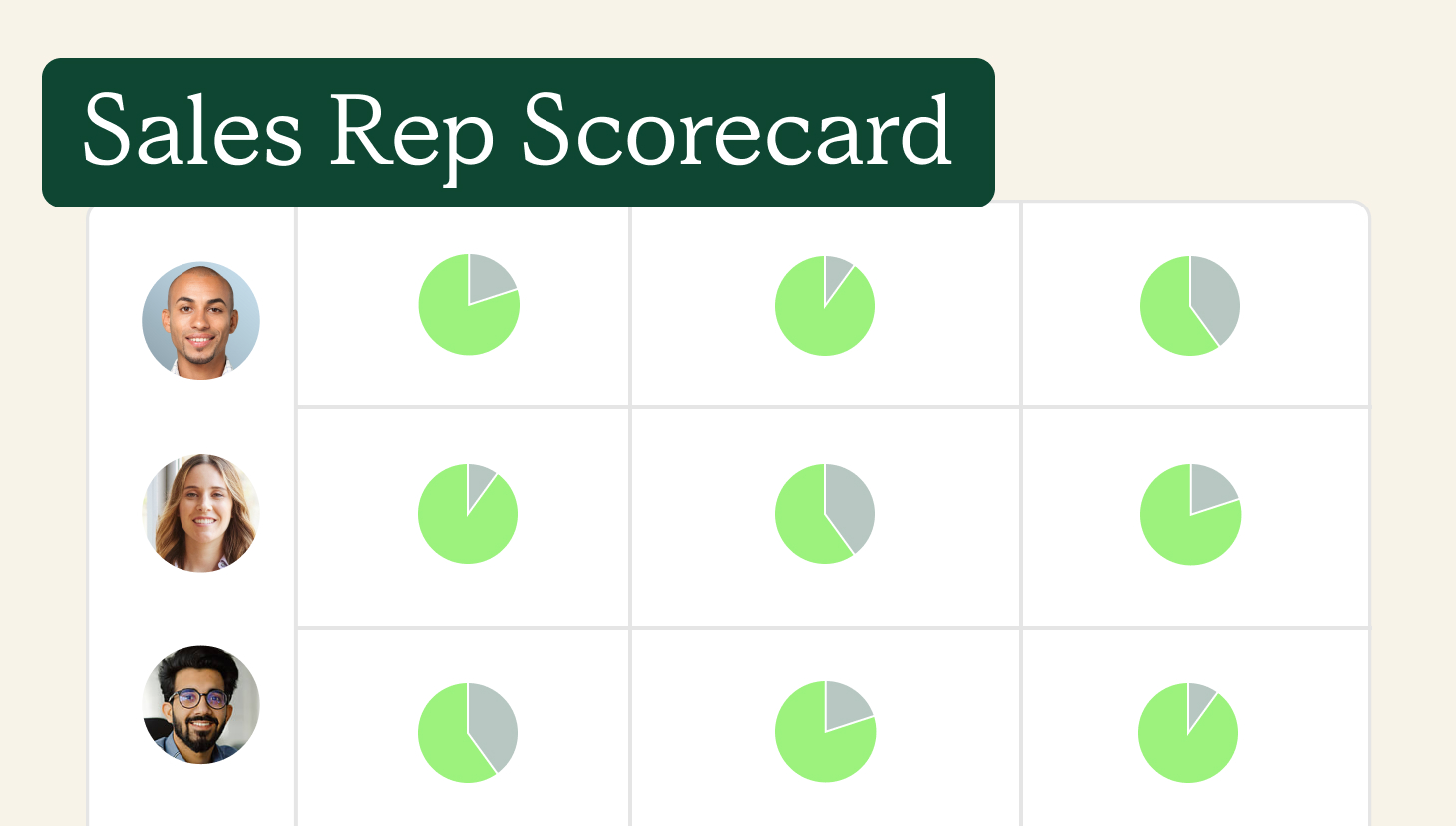Businesses strive for growth in all areas, and we often look at sales as the leading driver of growth.
More sales = more success.
It’s a good start, but sales data can tell you so much more about your business.
Sales data analysis can help you gain deeper insights, assess strategies, find weak points, and make improvements to your business operations.
In this article, we’ve put together a list of reasons why you should utilize sales data analysis and the practical steps you can take to do so.
What is sales data analysis?
Sales data analysis looks for insights into every step of the sales process. It covers a lot of ground, from sales rep performance to product popularity to customer behavior.
Every aspect of your sales process can be mined for valuable data. Sales data analysis involves taking this data and turning it into actionable insights.
For example, a call center analytics dashboard can give you insights into cold call success, call length, customer sentiment, and sales rep performance.
Sales data analysis is a powerful tool for business success.

7 reasons why sales data analysis is vital for business success
We cannot emphasize enough that sales data can tell you a lot about your business—more than just how many products you’re selling.
Sales data analysis offers insights into a variety of business operations, some of which might surprise you.
So, let’s look at the benefits of sales data analysis and how you can achieve them.
1. Focusing on products and strategies that work
Sales data analysis can help you determine which products and sales strategies work best for your brand.
You can identify:
- High-performing products
- Most effective sales and marketing channels
- Locations where certain products sell best
- Your target audience and their needs
- Which marketing campaigns drive the most engagement and sales
Sales data analysis can also help you identify weaknesses and roadblocks in your sales process.
These weaknesses include:
- Unpopular products that you can cut from your line or work on improving
- Underperforming sales employees who might need extra training and guidance
- R&D that lacks innovation or awareness of customer needs
- A lack of cohesion and collaboration between departments
- Gaps in your tech stack that you can fill with tools to streamline operations
An effective sales report can provide a comprehensive overview of these aspects, enabling you to make data-driven decisions and optimize your sales strategies accordingly.
How?
Creating successful sales strategies involves a general overview of what’s working and what isn’t. You’ll want to look for high and low points in your sales processes:
- Product performance: across demographics and locations
- Customer demographics: where to find your target audience
- Sales team performance: how successful your team is at selling
- Marketing campaign ROI: sales targets from marketing campaigns and which campaigns are hits and misses
- Sales channel data: which channels are popular vs. which few people use

2. Better customer relationships
Sales data contains powerful insights into your customers.
These insights allow you to design products and services that meet your customers’ needs, streamline the buying process, improve your customer experience, predict future behavior, and create marketing campaigns that appeal to your audience.
You can also assess whether your customer-facing teams have all the tools they need to foster customer relationships. If your sales reps need access to customer data when making a sales call, for example, you can implement a preview dialer.
Happy customers become repeat customers and create up and cross-selling opportunities. They also become brand advocates, spreading awareness across review sites, social media, and word-of-mouth recommendations.
How?
For better customer insights, monitor sales data analytics like:
- Product performance across different demographics: age, gender, location, etc. This can help you focus your efforts on your target audience
- Churn rates: higher-than-average churn rates can indicate problems with your products or sales process
3. Improve marketing strategies
Sales and marketing go hand in hand. Good products are easy to market, and good marketing generates more sales, which in turn means more money for good products and marketing.
Understanding sales data that affects customers can help you create better marketing strategies.
How?
To understand which marketing strategies generate the best sales, look at:
- Sales channel metrics: depending on what kind of business you are (B2B, B2C, etc.), sales data analysis lets you see your most successful channels and determine a target audience for your marketing efforts
- ROI: how much you spent on your marketing campaign vs. how many sales it brought in
- Product popularity: you can determine which products need a marketing boost and how certain campaigns might be affecting sales of certain products
- Customer sentiment: good marketing campaigns create online buzz and customer engagement, leading to better sales

4. Generate and convert more leads
Sales data analysis can help you generate and convert more leads. It can also help you hone your lead-nurturing process.
Converting leads requires a deep understanding of your customers and their behaviors, which sales data analysis can help you achieve.
For example, your lead conversion rates might be low due to inadequate pairing of leads with qualified sales reps. Looking at your numbers, you might see the opportunity to implement a skill-based routing system.
How?
To generate, nurture, and convert more leads, look at sales data like:
- Lead generation: the number of leads you’re generating overall
- Lead conversion rates: the number of leads that are converted
- Average sales length cycle: how your sales cycle compares to industry benchmarks. Lengthy sales cycles are the norm in B2B sales, but B2C sales need to move faster
- Sales rep performance: are your team hitting KPIs? If not, you might have problems with products, productivity, or sales tools
5. Keep up with trends
Sales data analysis can keep you agile in a fast-moving market.
Businesses often arrive late to the party. A trend reaches its height, and the business becomes aware of it and scrambles to put something together. By the time they’re ready to release a new product or marketing campaign, the trend has passed, and the business is left looking a bit washed up.
You never want to be the “How do you do, fellow kids?” brand.
Keeping up with trends can help you stay relevant, adapt to changing customer needs, and identify gaps in the market.
How?
To keep up with fast-moving trends, look at:
- Product performance: look for high-demand products or a sudden surge in popularity
- Social media data: analyze your audience’s posts and content to find patterns, trends, or gaps in customer needs that your brand could fill
- Competitor analysis: if your competitors are gaining market share in sales of certain products, that might indicate an emerging trend
You also need to ensure the accuracy and reliability of your data through robust data validation techniques. By validating your data regularly, you can trust that your analyses reflect the most current and accurate information, empowering you to make informed decisions and stay ahead of market shifts.
6. Improved employee satisfaction and productivity
Sales data can tell you a lot about your employees, too. If your sales department has a high turnover, you might have problems.
Perhaps your team members are struggling to connect with leads effectively, indicating a need for better training or tools. For instance, implementing cold calling software could streamline their outreach efforts and improve their success rates.
Being aware of how your employees are doing and taking steps to address issues is vital to running a successful business. A happy, productive sales team will perform far better than an unengaged one where half the team is looking for other jobs.
Utilizing these strategies to grow your business can lead to a significant improvement in team performance and customer satisfaction.
How?
To help you retain talent, you can monitor:
- Employee retention rates: monitor your retention compared to industry benchmarks
- Employee satisfaction score: conduct surveys and interviews
- Sales per team member: if a sales rep’s sales are suddenly declining, they might be disengaging from your company

7. Better financial management
Sales data analysis can help you manage your company’s finances better.
Current sales data can tell you about performance, products, and sales reps—essentially, all the things we’ve discussed in this article. Understanding this data lets you find places to cut costs, increase spending, or streamline operations.
For instance, by analyzing customer behavior and market demand trends, you can implement dynamic pricing strategies, adjusting prices in real-time to maximize revenue. Sales data analysis also allows you to predict future sales, making it easier to allocate resources going forward.
Additionally, analyzing payout trends can reveal insights into your financial health and aid in optimizing your budget allocation.
How?
You can make more accurate financial decisions by monitoring sales data like:
- Predicted profit vs. actual profit: are you hitting targets? If not, sales data helps you work out why
- Sales revenue analysis: products that sell well, channels that bring in the most sales, and overall profits
Streamline commissions for your RevOps, Finance, and Sales teams
Design, track, and manage variable incentives with QuotaPath. Give your RevOps, finance, and sales teams transparency into sales compensation.
Talk to SalesSome extra tips
Here are a couple of extra tips to help you get the most out of your sales data analysis.
Automate
Data analysis can be complicated and messy. The best way to collect, store, and analyze data is to utilize automation tools.
There are lots of tools online to help you manage sales data, from one-time purchases to SaaS providers. Practical tools like hardware and data warehousing are also important.
Evaluate your needs and look for tools that specifically address those needs. Also, look for integrations with your existing tools to make the transition easier.
Make the data work for you
Don’t be afraid to get creative with your sales data analysis. Look at how certain variables affect areas of performance to help you make better decisions.
Does focusing sales and marketing strategies on a specific demographic increase or decrease sales? Does switching focus from B2C to solely B2B sales improve profits?
Sales data analysis can help you answer these questions.

Collecting sales data
Let’s take a look at what types of sales metrics to track and why:
Revenue per Sales Rep – Helps assess individual performance and identify top-performing reps to replicate best practices.
Quota Attainment – Measures how well sales reps are hitting their targets, which is crucial for evaluating compensation plans and performance.
Sales Cycle Length – Tracks how long it takes to close a deal, helping optimize sales processes and improve efficiency.
Average Deal Size – Indicates revenue potential per sale and helps in forecasting and sales strategy adjustments.
Win Rate (Conversion Rate) – Shows the percentage of deals won versus total opportunities, useful for diagnosing pipeline health.
Lead-to-Close Ratio – Measures the efficiency of the sales funnel, highlighting areas where prospects drop off.
Customer Acquisition Cost (CAC) – Helps determine how much is spent on acquiring each customer and whether sales strategies are cost-effective.
Customer Lifetime Value (CLV) – Predicts long-term revenue from a customer, ensuring sales efforts are focused on high-value clients.
Churn Rate – Indicates the percentage of customers lost over time, helping refine sales strategies to improve retention.
Sales Pipeline Velocity – Shows how quickly deals move through the pipeline, allowing teams to address bottlenecks.
Commission Payout Accuracy – Ensures sales reps are paid correctly, maintaining trust and motivation in compensation plans.
Product Mix Performance – Identifies which products or services contribute the most to revenue, aiding in sales prioritization.
Discount Utilization Rate – Tracks how often reps use discounts to close deals, ensuring pricing strategies remain profitable.
Sales Forecast Accuracy – Measures the reliability of sales projections to improve strategic decision-making.
Upsell & Cross-Sell Rate – Reveals additional revenue generated from existing customers, a key metric for maximizing profitability.
How to pick the right sales data to analyze
But what data you should select?
This will vary on the stage of your org, sales cycle, team set up and more, but here a few things to keep in mind.
- Choose metrics that directly impact revenue growth, customer retention, or efficiency improvements.
- Track data that can drive meaningful decisions, such as adjusting compensation plans or refining sales processes.
- Ensure the data is reliable and easily extracted from your CRM or sales tools.
- Prioritize metrics that reflect different stages of your sales process, from lead generation to closed deals.
- Balance between tracking overall sales trends and evaluating individual rep effectiveness.
- Collect data that helps understand customer behavior, such as buying patterns, churn risk, and upsell opportunities.
- Choose metrics that allow for benchmarking against past performance to measure improvement.
- Distinguish between process efficiency (speed of sales cycles) and effectiveness (win rates, revenue per rep).
How often should you be running sales data analysis?
The frequency of sales data analysis depends on the type of metrics tracked and business goals.
Daily or real-time tracking is essential for monitoring pipeline updates, rep performance, and lead movement to ensure sales teams stay proactive. Weekly reviews should focus on win/loss trends, quota attainment, and sales activity to identify early signs of success or challenges. Monthly analysis is crucial for evaluating revenue performance, deal velocity, and commission payout accuracy to maintain transparency and efficiency.
On a quarterly basis, businesses should assess compensation plan effectiveness, market trends, and customer retention to refine strategies.
Annually, a comprehensive review of sales processes, forecasting, and goal-setting helps ensure alignment with long-term business objectives. The right cadence balances proactive decision-making with strategic oversight, optimizing both short-term performance and long-term growth.
Why sales data analysis is vital for business success
Sales data analysis is a powerful tool for evaluating, improving, and growing your business.
Sales data can tell you a lot about your business operations, offering surprising insights into both sales-specific and non-sales-specific processes.
Utilize sales data analysis to better understand your audience, improve your sales processes, innovate your products, and support your sales employees. Sales data analysis can provide a holistic view of your organization and lead your business to greater success.



